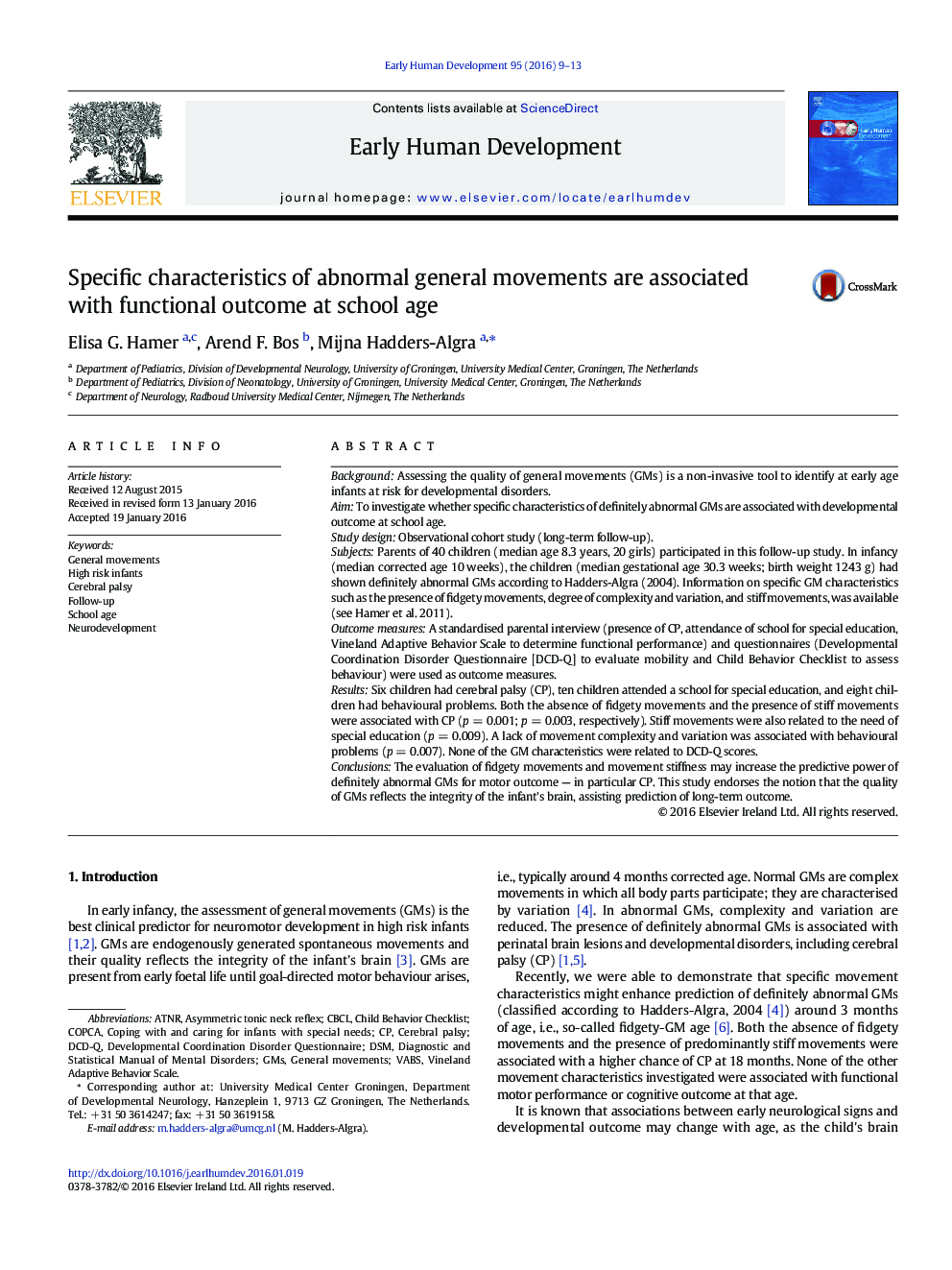| Article ID | Journal | Published Year | Pages | File Type |
|---|---|---|---|---|
| 3917676 | Early Human Development | 2016 | 5 Pages |
•In high risk infants, the evaluation of fidgety movements and movement stiffness may increase long-term predictive power of definitely abnormal general movements.•Both the absence of fidgety movements and the presence of stiff movements increase the risk for CP.•Stiff movements are also associated with the need of special education.•Lack of movement complexity and variation is associated with behavioural problems.
BackgroundAssessing the quality of general movements (GMs) is a non-invasive tool to identify at early age infants at risk for developmental disorders.AimTo investigate whether specific characteristics of definitely abnormal GMs are associated with developmental outcome at school age.Study designObservational cohort study (long-term follow-up).SubjectsParents of 40 children (median age 8.3 years, 20 girls) participated in this follow-up study. In infancy (median corrected age 10 weeks), the children (median gestational age 30.3 weeks; birth weight 1243 g) had shown definitely abnormal GMs according to Hadders-Algra (2004). Information on specific GM characteristics such as the presence of fidgety movements, degree of complexity and variation, and stiff movements, was available (see Hamer et al. 2011).Outcome measuresA standardised parental interview (presence of CP, attendance of school for special education, Vineland Adaptive Behavior Scale to determine functional performance) and questionnaires (Developmental Coordination Disorder Questionnaire [DCD-Q] to evaluate mobility and Child Behavior Checklist to assess behaviour) were used as outcome measures.ResultsSix children had cerebral palsy (CP), ten children attended a school for special education, and eight children had behavioural problems. Both the absence of fidgety movements and the presence of stiff movements were associated with CP (p = 0.001; p = 0.003, respectively). Stiff movements were also related to the need of special education (p = 0.009). A lack of movement complexity and variation was associated with behavioural problems (p = 0.007). None of the GM characteristics were related to DCD-Q scores.ConclusionsThe evaluation of fidgety movements and movement stiffness may increase the predictive power of definitely abnormal GMs for motor outcome — in particular CP. This study endorses the notion that the quality of GMs reflects the integrity of the infant's brain, assisting prediction of long-term outcome.
